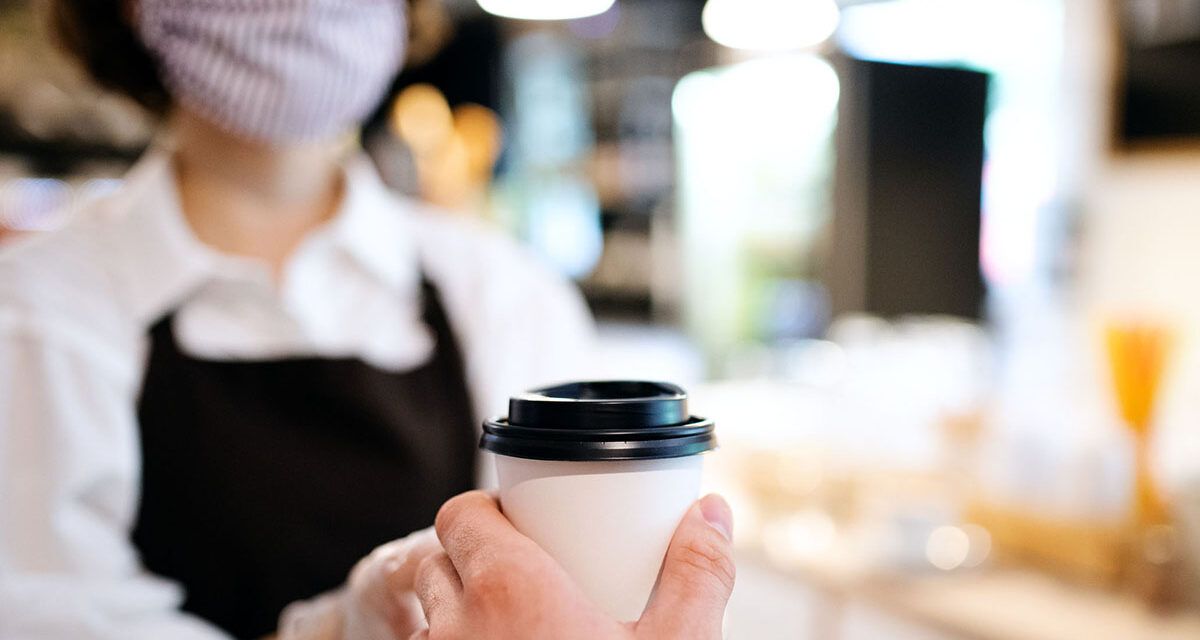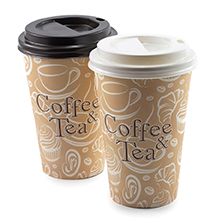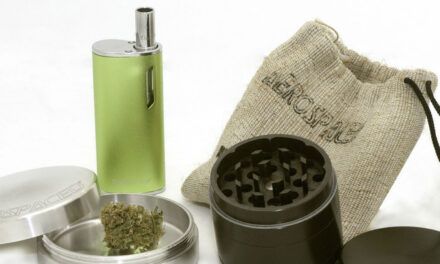
Coffee and the New Normal

Coffee and the New Normal

paper cup with a coffee and tea isolated on white background
Coffee – we are still drinking it but when and where might be different this year as lives and schedules have been turned upside down by the global pandemic COVID-19.
“We play an incredible role in people’s lives and people’s lives have been upended this year,” Luisa Girotto, vice president, public affairs, Starbucks Coffee Canada told those who tuned into the Coffee Association of Canada’s virtual conference recently.
Nobody was prepared for the pandemic, noted conference keynote speaker Massimilliano Pogliani, CEO of illycaffe, who presented a global perspective on coffee from his home in Italy.
“However, crisis is not unfamiliar to the coffee industry,” he stated, noting blights, market volatility and climate adversities as other challenges the industry has encountered over the years. “All we can do is our best. Focus on what you know and do what you can with integrity, authenticity and passion.”
Coffee can and should be a very important component of convenience store business, especially with its’ robust margins,” noted Karen Weldman, vice president, new business development, express brands, MTY Group during a recent interview. “Sixty-seven per cent of Canadians consume coffee outside of their homes, so ensuring there is a well-executed, quality coffee program available is essential. It is also extremely important for store owners to understand the power of upselling so that when their customer is running in to purchase a lottery ticket, pack of gum, or whatever, they are able to excite the customer with their branded coffee and baked good offer.”
MTY Group recently introduced a new piece of coffee equipment to its Country Style level one self-serve hot beverage and baked goods program.
“It is the bean-to-cup machine, which freshly grinds and brews individual coffee cups in just over one minute,” said Weldman. “This machine completely eliminates the waste created with the standard brewing pot system and guarantees your customer a freshly brewed coffee every time. In addition to our traditional and dark roast blends, the bean-to-cup machine also produces our hot chocolate and two flavoured coffees as well. By implementing this machine, we are able to eliminate a number of pieces of equipment as well, which in turn reduces the counter space requirement.”
In addition to the bean-to-cup equipment recently introduced to the convenience store channel, MTY Group has also upgraded its thaw and serve baked goods offer, which provides for a variety of top-selling Country Style baked goods, including donuts, muffins, cookies and tarts, said Weldman.
“What is efficient about this component of the program is if the location is running low on baked goods in the morning, the owner simply thaws the product and restocks their display case,” said Weldman. “This allows for better overall management of the waste component of the program to ensure efficiency and profitability.”
However, there is more to having a successful convenience store than a good coffee program, said Weldman.
“Store owners must realize that a solid coffee program is not a magic bullet for a location that is unkept, dusty and cluttered,” she stated. “I receive many applications that, unfortunately, do not get approval because the owner is unwilling to clean up the store. The key to a successful convenience store is in every aspect of the execution. When an owner understands the importance of maintaining standards and providing outstanding customer service, then success is achievable.”
The convenience channel has remained active despite all the difficulties and challenges brought on by the pandemic, noted John Notte, vice president of sales, Franke Coffee Systems North America, speaking at the coffee association conference.
“In the convenience store channel, we are seeing retailers transitioning into digital for multiple reasons,” said Notte. “Anyone who was dappling in digital, drive-thru, pickup and pay started to move forward and we were able to offer solutions where that can be integrated into our equipment.”
Digital coffee solutions are a core business for Franke Coffee Systems, said Notte, adding that the digital transition is expanding and becoming more interactive visually for the consumer with fewer touchpoints.
When it comes to flavour and specialty coffees, Notte commented that even a pandemic can’t stop the popularity of pumpkin space lattes.
“For months, things were on hold,” commented Brian Loukmas, vice president of innovation, Monin Americas, during the virtual conference. “Then, in the last couple of months, we said let’s roll out some new flavours and new coffee programs. It just came out of nowhere because numbers were growing and sales starting to get closer to a new normal. We went from on hold to frantic pace and it has been exciting. It has been great to see places opening and looking toward the holidays. I hope it continues to move forward.”
Comfort flavours remain popular, although instead of a 6 a.m. to 9 a.m. coffee run, it has been more of a 10 a.m. to 2 p.m. event, said Loukmas.
“People still want someone else to make their coffee,” said Loukmas, commenting on the popularity of pumpkin spice, vanilla spice and chocolate peppermint. “I’ve also seen a lot of honey combos. Right now, we are working on a lot of spring and summer beverages and there are a lot of different flavour combinations, including honey and florals.”
Consumers are interested in clean label coffees and when at home, flavoured creamers might be the way people choose to go because of their ease of use, but when they go out for a latte they expect syrups or concentrated flavours, said Loukmas, who advises those in the coffee business to be a bit more adventurous with their beverage offerings as consumers rediscover a renewed interest in health and wellness.
“I think this pandemic is giving us time to look at innovation and what can we do in the areas of health and wellness,” said Loukmas. “It will be exciting to see what comes out of all of this.”
Vince Sgabellone, industry analyst, Canada foodservice, the NPD Group, told the conference that foodservice was already starting to show signs of slowing down prior to COVID-19 and the pandemic accelerated that trend downwards. The restaurant business has been devastated by COVID-19 with a decline of $9 billion lost in the foodservice industry over a six-month period, he stated.
“The entire beverage portfolio was at zero per cent growth in 2019,” said Sgabellone. “Hot coffee, which represents one-third of all foodservice beverage and is by far the most popular beverage for out-of-home consumption, was flat for the year.”
Changes in routines have had substantial impact on foodservice coffee, noted Sgabellone, with brewed coffee down from 75 per cent of total servings pre-pandemic to 60 per cent.
The coffee beverages that have shown growth for many years are iced and frozen coffees, which were up to 13 per cent of total servings as of December and continue to grow, said Sgabellone, who suggested offering limited edition blends or special offers to entice customers to make purchases.
“Coffee is the most popular beverage in Canadian foodservice but it has been hit hard by the changes to our daily routines,” said Sgabellone. “Coffee will have to find new ways to reach customers as consumers will be sheltering at home for the foreseeable future.”
The biggest challenge to the coffee industry will be serving a much less mobile marketplace, noted Syvlain Charlebois, a professor with the faculty of agriculture at Dalhousie University.
“Twenty-three per cent of employers are thinking of allowing their employees to work from home on a regular basis after the pandemic,” said Charlebois during the conference. “When people are working from home, it can be very difficult to get their business. The other challenge is online selling. We are expecting online food sales to triple by the end of this year and there is going to be a lot of coffee in there. Serving that market of consumers who are spending more time at home will be critical. More cities are looking at banning drive-thru operations so that is a very important tool that coffee has right now that may not be there for much longer because of our will to become more sustainable.”
Conflicting messages from public health officials across the provinces has led to a confused marketplace, noted Charlebois.
“I have been to some shops in recent months that looked like a crime scene while others actually have done a great job of making me feel safe and somewhat normal,” stated Charlebois. “Remember, this is coffee, and you want to present a nice experience to the public. Of course, you have to be responsible and make sure your customers and staff are as safe as possible but at the end of the day, it’s about keeping customers relaxed as much as possible too.”
The world needs more comfort right now and coffee can provide that, said Charlebois.
“You are in a good spot with the product you are selling,” he said. “You have what people need. You are not just selling coffee. You are selling comfort and an escape from what is happening in the world right now.”


































